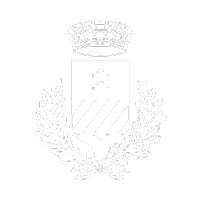Nel 1148 i canonici si accordavano con gli 'homines de Calcinate' per derivare una seriola del Serio. Il documento dell'accordo elenca le clausole per la manutenzione e per lo sfruttamento del manufatto.
Risalgono a questo periodo i primi indizi di un affrancamento degli abitanti dagli obblighi feudali.
Calcinate, che dipendeva da feudatari residenti a Bergamo, ebbe le sue prime magistrature comunali poco dopo la metà del XII sec. Bisogna però aspettare il secolo successivo per vedere espressamente nominate le magistrature comunali: nel 1213 in un atto pubblico, i 'vicini er consules universitatis de Calcinate' stipularono un contratto senza nominare i legittimi feudatari. Nello stesso periodo anche le chiese dei centri minori ottennero una certa autonomia dall'autorità
dell'archipresbiter delle pieve, pur rimanendo ad esso legate da vari obblighi.
In un documento non datato del XIII secolo sono elencate alcune testimonianze di preti a favore del prevosto di Ghisalba contro i Canonici di S. Vincenzo per la giurisidizione sulle chiese di Calcinate.
Praticamente per tutto il XIII e XIV secolo, le chiese di S. Maria, di S. Stefano e forse anche di S. Martino, costituirono altrettante comunità religiose che, pur non potendosi ancora definire 'parrocchie' ne avevano tuttavia alcune prerogative. La 'parrocchia' come oggi la intendiamo, nacque solamente con il Concilio di Trento (XVI sec.). Nel secolo XIII la decadenza della vita e dei costumi ecclesiastici favorì la diffusione di vari movimenti ereticali tra i quali ebbe qualche risonanza l'eresia di Fra Dolcino che soggiornò in Martinengo per breve tempo facendovi proseliti.
Si diffusero in questo tempo anche molti ordini religiosi che eressero conventi in città e nel territorio: Benedettini, Agostiniani, Umiliati, Francescani, Domenicani.
Tratto da: Calcinate - Origine e sviluppo di un centro abitato nel Medioevo di Riccardo Caproni.
